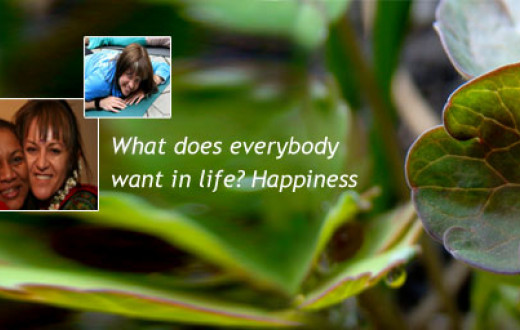Q: : In your websites you speak about 'spiritual' values. Doesn't that mean The Art of Living is a religious organization?
No, the Art of Living is not a religious organization. By 'spiritual values' we mean universal human values like friendship, generosity, compassion, care for the environment and service to humanity –These are values respected by all nationalities and traditions. In fact, one of our goals is to promote spiritual values, regardless of the religious, cultural or social background of people who participate, respecting and not questioning any religion people may practice
Q: Are there any rules and customs in the Ashram or on the program that I should be aware of?
The rule, if you can call it that, at the International Art of Living Center in Quebec (Canadian Ashram) is for you to feel at home and help others feel at home too. As we remove shoes going into most buildings please do not wear any expensive footwear. And we ask you to dress comfortably and modestly, bringing clothes necessary according to the weather. Often in the evenings people like to dress up for satsang, especially if Gurudev is with us. The custom here does ask for people to cover shoulders and legs, and clothes that encourage ease of dancing. Shawls and skirts, and traditional colourful clothes from India are available for purchase in the Divine Shop. If during your stay at the ashram traditional ceremonies of Hindu or other traditions take place you may see women covering their heads with shawls. Please wear your nametags at ALL TIMES for security reasons" No alcohol, cigarettes or drugs are allowed in the ashram. No meat is allowed in the ashram (includes chicken, duck, fish, shrimp, prawn, egg, beef, pork, lamb, venison, etc) If your program requires you to be in silence, please refrain from talking, whispering, or communication with anyone in any way to reap full benefits of the program for you and to avoid disturbing others. This request is modified for families with young children. Men and Women do not share accommodation. Men will be housed with other men, and women housed with other women. Families can be housed together in accommodations outside the Ashram grounds. Other guidelines for accommodations, meal preparation and times of transportation are provided and given to you when you register for courses or make plans to visit the ashram. When you go to another ashram please do check the customs and guidelines there, for your and others' comfort.
Q: Is the ashram wheel chair accessible?
Please contact our Housing and Registration offices before you register for a program and come to the Ashram to find out the arrangements we can make for your particular needs. The programs at the ashram are often in various places on the 250 acre grounds, and pathways can be very rustic and curved and unpaved. We do our best to support you with special transportation and attendant care though your mobility in the ashram will be your responsibility.
Q: What are the goals of the Art of Living Foundation?
Our goals are: A stress-free and violence-free society; to encourage people from all backgrounds, religions, and cultural traditions to come together in celebration, meditation and service. To achieve these goals, we offer courses and humanitarian projects to eliminate stress from the mind and violence from society. If people are materially poor or suffering from the effects of a natural disaster or war, their stress will be related to that. The International Art of Living Foundation offers material assistance or trauma relief. We offer education and empowerment programs so people can break the poverty cycle. On the other hand, those who are affluent may nevertheless be frustrated, depressed or simply wanting to grow spiritually in life. In the latter case, it is not material support that is needed but training programs like the Art of Living course. These are for anyone who would like to learn breathing and other techniques to release tension, and wisdom that enable the individual to handle any challenge.
Q: What is the profile of the organization? Is the organization a charity? A training organization?
It is both. The Art of Living is a registered charity in Canada and we provide a range of educational courses and humanitarian ventures to reduce stress and violence, and help people to come together in celebration and peace. Many who graduate from our courses take up voluntary work of various kinds, with various organizations, seeing that to realize one's full potential we need to take care of our society, our environment. To support their development, graduates of Art of Living and Art of Silence programs are eligible to participant in a special program known as DSN, the goal of which is to make the individual stronger; thus able to take more responsibility – at work, in the family and in the society. Similarly, our youth programs - for children, teens and students/young professionals, encourage the young to engage in voluntary activities. For people who want to teach our programs we have special courses. You can speak to your teacher or write to ntc@artofliving.ca
Q: You are a charitable organization – so why do you have course contribution for your courses?
Yes, we do request course contribution charges for many of our Art of Living courses that are offered for adults, children, teenagers, and students. The income from these paid courses is used to pay expenses for those programs, and for the expenses for programs and projects where no or subsidized fees are required.
Q: How do the finances work? Some of your programs are paid, like the Part 1 course, and others like trauma relief support are sponsored by the organisation?
Part of the financing of our humanitarian efforts comes from charitable donations – just like many traditional charities. Where it is possible we do have programs where participants pay a small course fee. Proceeds from our paid courses are also used to help finance our humanitarian programs.
Q: What is meant by 'seva'? You sometimes speak about it in your press releases?
'Seva' is a Sanskrit word meaning service. Gurudev Sri Sri Ravi Shankar teaches that for us to be stress-free and productive seva, being of service to our communities, is important. Sanskrit is the language of ancient yoga teachers and texts, and these techniques have been adapted for modern life by Gurudev Sri Sri Ravi Shankar One of the basic goals of the Art of Living is to provide a place where all people may come together for celebration and service (or 'seva'), as an organisation which welcomes all as part of our peace-making initiatives. Even if we have very different cultures, languages, customs or religions, we may do some voluntary work together and be of service to our communities.
Q: In your press releases it is mentioned that your activities are 'volunteer-based'? Why do so many people want to join in? What do they get out of it?
The vast majority of the people who contribute to our activities volunteer their time and talents and do this on a part-time basis, keeping a balance of home, family, work and volunteer activities. The satisfaction from doing something for others is very great. It's a natural impulse to help others - something which young children exhibit, but sometimes stress, fear and other negative emotions block. Part of being more relaxed and content is a sense of belongingness to others, and from this sense of belongingness service activity becomes spontaneous! Once people have done the Art of Living course they often want to continue to contribute to the organization's activities and projects.
Q: How can I volunteer with your organization?
If you are a course graduate, simply speak to your local teacher or organizer. If you have not taken an Art of Living course yet, please contact your nearest chapter or center, letting them know how you might be interested in helping. Most volunteers have done the Art of Living course which helps their volunteer experience. For general information or requests to volunteer on the national level of the Canadian foundation write to president@artofliving.ca
Q: How can I become a member of your organization?
There is no formal membership process. People participate in various ways - come for a course, volunteer (see previous FAQ, No. 13) or donate. If you would like to participate in a free-of-charge introduction to our courses, contact your local center or chapter. If you would like to come for regular sessions, you should first take a course: Art of Living for adults, SKY Kids for children, YES! for teens, and YES!+ for students and young professionals
Q: So, can anyone take part in a program?
Yes! The courses are open to people of all ages, backgrounds, cultures and traditions from across the world. They do not conflict with any person's existing religious or spiritual practices. We ask people with a medical condition to speak to the trainer in advance, and if desired speak with your doctor. Pregnant women also need to speak with the trainer before the course. "We identify ourselves as somebody - I belong to this religion, this culture, this tradition; but we forget the basic identity that we are human beings." - Gurudev Sri Sri Ravi Shankar
Q: Where do the techniques come from? India? Yoga?
Many of the techniques used in our programs are based on yoga and other teachings from ancient texts called the Vedas. Through these teachings the East in general has a long tradition of ways of dealing with stress. You might say that eastern cultures in some way have specialized in knowledge about stress, personal development and handling various emotions. However, the techniques taught and the human values we promote are completely universal, present in world traditions and cultures. For example, breathing techniques are a key to stress release - and we all breathe, where ever we were born.
Q: Is it a self development program or something spiritual?
It's both! The basis of spirituality is simply knowing ourselves better. Many people find that the Art of Living Course releases layers of stress without effort. In our programs you can discover the hidden laws that govern the mind, as well as skills to effectively deal with negative emotions. In addition you will experience the ancient practices of yoga, meditation and rhythms of breath, as these are combined in new ways for you to nourish all levels of the body, mind and spirit.
Q: How long has the Art of Living Part I course been taught?
In the early 1980's the first courses were taught in India. The first Art of Living course was taught in Canada in 1986. Since then millions of people in over 150 countries,people from different backgrounds, religions and cultures have done the course.
Q: What is a satsang? I noticed The Art of Living organizes events called satsangs where there is a lot of singing and dancing, like a party. It looks like a lot of fun, but what has that to do with stress relief or promoting human values?
Yes, at a satsang, there is some singing and dancing – in all languages from Sanskrit to Hebrew, from English to Polish, emphasizing the universality of our message. There is also some discussion on spiritual wisdom, i.e. there is a balance of intellectual activity and music As we know today, the human brain has two hemispheres - the right half which is more connected to art and intuition, and the left half which is more connected to logic and reasoning. Some people are more logical and perhaps do not like music and dance. Others are more spontaneous and like dancing, but avoid logic or more intellectual activities. It's important to develop both aspects for either of them to fully flourish, and this is what satsang is all about. We've learned that geniuses like Einstein did not think only logically, but also very intuitively; with pictures. It doesn't matter if you dance well or sing well. It's very beneficial to participate anyway. Every satsang is different, some even feeling like a professional concert.. To find out more, take the first step or join a program near you and ask the trainer.
Q: What is the significance of the breath? Why is it so important?
Breathing is normally an unconscious process. The breath is the link between the body, mind and spirit. Each emotion has a different rhythm of breath. Through the practice of our breathing techniques, you will learn to consciously govern the breath so that it brings harmony into your body, mind and spirit.

























